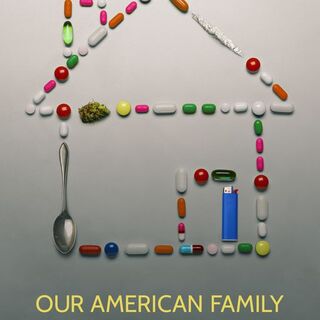Addiction
When a Loved One Has an Addiction
A review of the documentary Our American Family.
Posted August 28, 2022 Reviewed by Lybi Ma
Key points
- Active addiction in one member of a family can upend all members of a family.
- There are many paths to recovery, but no escaping the hard work it takes.

When addiction takes over the life of a drug user, it also upends the lives of family members, spouses, and partners. A person with an addiction to opioids (like oxycontin, heroin, and fentanyl) will do just about anything to get their next fix. They will lie, steal, deal, and betray those closest to them, their families.
These destructive behaviors are the waters of addiction that a family swims in, by no choice of their own. Many will try to help, and try, try again as repeated (and costly) relapses and overdoses erode hope, a vital force in achieving and sustaining recovery.
What is life like in a family where a loved one has an addiction?
Our American Family uses the camera’s wide-angle lens to answer this question. This film’s subject principally is the family of a person with a life-threatening addiction, which has this forceful documentary stand out from many other fine documentaries whose subject is the person(s) with the addiction. In this film, we travel for four years in the life of a family upended by the tsunami of an active addiction.
The directors’ (Hallee Adelman and Sean O’Grady) camera knows to take special aim at the family’s kitchen table, often ground zero in a home. It sharply captures how the early stages of addiction can inflame and divide a good family, earnestly trying to do good. Their agony is by no means unique: it resonates with countless other “American” families beset with addiction, often multi-generational, in a child, spouse, sibling, or parent.
Nicole, a woman in her late 20s, sets out to achieve high ground from her addiction. She had OD’d four times in the past year and had been in Rehab 17 times.
Her mother, Linda, devotes her able, self-critical self to trying to keep Nicole alive. She has worked hard to overcome the demons of her mother’s addiction. Her voice is articulate, outspoken, and determined, despite the toll of addiction. She is hardest on herself. Yet, she knows well that a supportive family is a predictor of recovery, and one that is not, the contrary.
But support is not uniform in this American family: the stepfather, Bryan, who can fix anything, cannot fix Nicole or the contention that prevails in his home. He doubts Nicole can emerge from addiction. He contests devoting more heart and money, believing that Nicole will forever remain an addict.
There are two brothers. Both are handsome young men.
Chris the older, is living in a self-made (partial) recovery from drugs. A voice-over declares the hard work he has put in to do so, without support or treatment. He is the toughest on Nicole, and Linda, too. He knows, firsthand, the toxic waters of a family with an active user.
Stephen, the youngest, is always paying attention but says little. He believes he cannot overcome the clamor of his family and that, “The biggest of his problems is no match for the smallest in other members of his family.” He seems the most grounded, not apt to follow the life of an addict, as did his biological father, brother, and sister. Only one of three children in Our American Family has escaped the grip of the disease. Chilling odds when applied to the entire population of our country.
The added complexity in this “American Family” is Nicole’s young daughter. Nicole is unable to responsibly rear her, because, as her voiceover tells us, “The disease is bigger than {anything else).” The job falls to her mother, who thus has not one but two high need people in her home. “Our American Family” is simply and powerfully illustrative of so many other families living with addiction.
The opioid epidemic in the US has not abated, though it seems to have come out of the shadows of Covid. Opioid dependence, in fact, has expanded: first, beyond oxycontin to heroin and fentanyl, at the highest rates to date of ODs and deaths.1 Rates of methamphetamine use, arrest, and overdose continue to climb.2 These data mean an even greater number of families will be battered by active, life-threatening addiction. Where families, on most days, fear the worst: a deadly overdose, no stranger to their communities, and beyond.
We know, from longitudinal studies, that most people with addiction enter and stay in recovery.3 They do so in diverse ways, including 12-Step, individual and family counseling, and medications. Some exit addiction with no intervention at all. But there is no predictable timeline for Nicole’s family, or any other. They are lost in a dark forest with no map or matches.
There is ample fuel for many a family fire, even without matches. As we witness in the fiery exchanges between Nicole and her brother and mother. Love is sustaining but offers little (and varied) direction.
This documentary ends with Nicole having achieved over four years of sobriety, working and caring for her daughter. Promising, but nothing is certain with addiction. One day at a time.
Recovery from addiction and from a life in a fevered, turbulent family takes time. There is no shortcut and no eluding the commitment it takes. Our American Family beautifully reveals how the process of recovery, for an individual and a family, happens by growing self-awareness, self-assertion, and self-determination. To when a person finds their true place in their family and their life.
References
1) NIDA
2) Methamphetamine Use, Overdose Deaths, and Arrests, 2015-2019




